
Are you a restaurateur and want to take your business online? Do you want to expand your online food-ordering business? Or you are using a food ordering system for the restaurant but need more advanced features. In that case, excellent online food ordering systems for restaurants that meet your requirements are necessary to boost your business.
Food ordering systems are a great option for customers to order food from their favorite restaurant when they don’t have time or energy to cook or leave the comfort of their homes.
Moreover, about 92% of top-performing restaurants offer mobile food ordering. About 75% of consumers prefer to order digitally. Plus, 60% of restaurants can expect more sales when they offer online ordering.
There are numerous online ordering systems on the market, and your needs and preferences will determine the ideal one for your restaurant.
So, deeply explore some efficient online food ordering systems that help restaurant owners manage their operations.
What is the Food Ordering Software?
The food ordering software is a digital solution that allows customers to place orders directly from the restaurant website or app. It helps restaurants to manage their tasks easily without any difficulty. Investing in online food delivery management software is the main factor in your restaurant’s success and growth.
The food ordering software’s main purpose is to:
- Allow customers to browse digital menus
- Accept and manage orders online
- Allow customers to order food and get it delivered to their doorstep
- Help restaurants to make informed decisions
Restaurant Online Ordering Stats
- 1.17 billion people globally use food ordering and delivery services in 2017.
- Since 2014, online food ordering has grown 300% faster than dine-in.
- 95% of restaurant owners believe that technology helps them to run their business more efficiently.
- According to Statista, the number of users in the online food delivery industry is expected to reach 2,656 million by 2026.
- 51 percent of Americans felt comfortable ordering for pick-up during the pandemic.
- According to the people of New Mexico, the number one food delivery item is salad.
What is The Best Online Ordering System For Restaurants?
Food ordering systems have revolutionized how restaurants operate and cater to customer needs. Explore some of the best online food ordering platforms that transform the restaurant experience.
1. Enatega
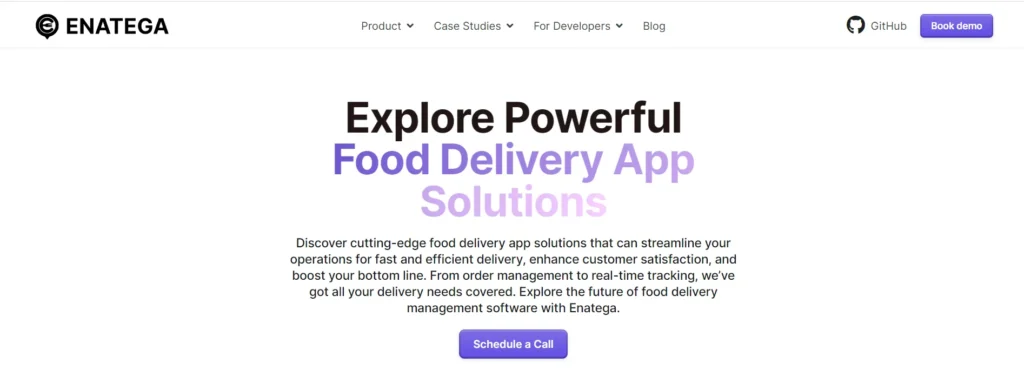
Enatega is the best restaurant food ordering system that provides food delivery services to customers. From order management to real-time tracking, all your delivery needs are covered. The Enatega app lets customers easily order food, browse menus, and enjoy a seamless dining experience.
Features
- Ratings and reviews
- In-app chat
- Advanced search functionality
- Analytics and reporting
- Pick-up and delivery options
- Push notifications
- Order tracking
- Order history
Enatega’s Products
Enatega offers a single-vendor and multi-vendor food ordering system for on-demand businesses. Both systems help food business owners automate their operations and manage all their activities from a single platform.
Single Vendor
For single-vendor food businesses, Enatega offers a seamless and user-friendly ordering system that enables customers to place orders directly from the restaurant’s website or mobile application.
The restaurant ordering software provides an intuitive interface where customers can browse through the menu, select their desired items, customize their orders, and make secure online payments. This streamlined ordering process ensures a hassle-free experience for customers, leading to increased customer satisfaction and loyalty.
Multi-Vendor
In the case of multi-vendor, Enatega offers a robust platform that facilitates the management of multiple restaurants within a single ecosystem. This enables entrepreneurs to create an online marketplace where customers can explore a wide variety of cuisines and dining options from different vendors.
With Enatega’s multi-vendor system, restaurant owners can effortlessly onboard new partners, manage vendor profiles, and ensure consistent quality and service standards across all participating establishments.
Pros
- Role-based access
- Multi-language support
- Tipping option management
- Real-time order receiving updates
- User-friendly interface
Cons
- Marketing and promotional plan is not included
- Training is required to run the ordering system
Supercharge your deliveries with Enatega.
Schedule a Call2. Grubhub
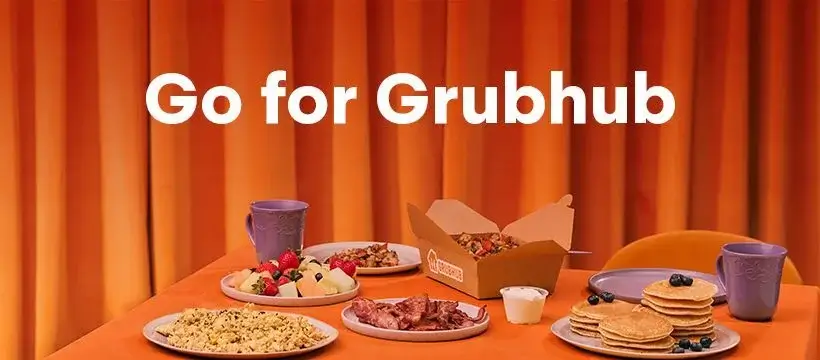
Grubhub is a well-known name in the online food ordering apps. It helps customers connect with local restaurants. The Grubhub covers 17,000+ eateries in over 400 of America’s best cities.
In addition, Grubhub, the online food ordering service, has used the latest technology and tools to grow your business and reach new diners. The company offers many features, which include real-time order tracking, a seamless ordering experience, deals and discounts, and more.
Pros
- Great customer service
- A wide variety of restaurants available
- Easy-to-use app/website
- The menu is well-displayed
- Store customer information for quick ordering
Cons
- Restaurants do not have full control over customer’s user experience
- Sometimes delayed deliveries
- Restaurants become dependent on the platform
3. UberEats
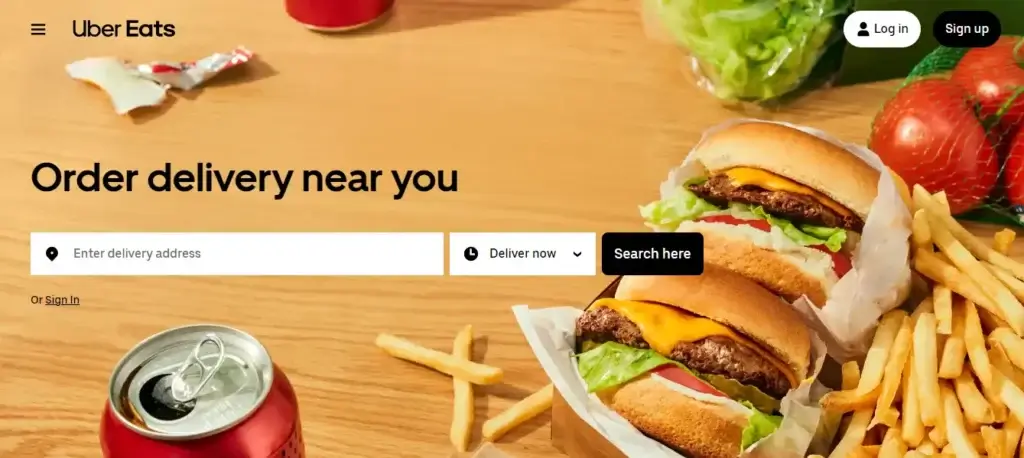
UberEats is another one of the best food ordering systems for restaurants. It is available in hundreds of cities worldwide and is famous for its convenience and wide range of food options. UberEats uses AI assistants to help customers plan meals, discover new dishes, quickly order ingredients for their favorite recipes, and find sales on grocery items.
Restaurants can easily partner with Uber Eats to reach a broader audience. Also, they benefit from the platform’s extensive delivery network.
Pros
- Get a notification when the rider delivers the food
- Extremely flexible
- Bank verification
Cons
- Customer support issues
- Technical problems in the app
- High commission fees
- Restaurants may face challenges in maintaining the quality of their food during the delivery process.
4. Postmates

Postmates is among the most innovative and successful players in the food delivery industry. One of the fastest-growing companies in the United States has recognized it. Postmates currently serves more than 600,000 restaurants, grocery stores, retailers, and shops within The United States. The company won several awards for its innovative technology and customer service.
Postmates provide integrations with other POS systems, making it easy for restaurants to streamline their workflow. Listing your restaurant on Postmates can help you increase profits and grow your online presence.
Pros
- Increase revenue
- Contactless delivery
- Order customization
- Fast delivery
- Review and feedback
Cons
- Orders cancel due to lack of riders
- Limited availability
5. Delivery.com

Delivery.com is an online ordering platform that helps restaurants manage menus and orders. From the Delivery.com platform, customers can order food from restaurants and groceries from their preferred grocery stores. This cloud-based solution is easy to use and allows group orders.
Pros
- Email notifications
- Excellent customer service
- Ease of use
- Free app
- No hidden fees
Cons
- Commission fees
- Restaurants have less control over the customer experience
6. DoorDash
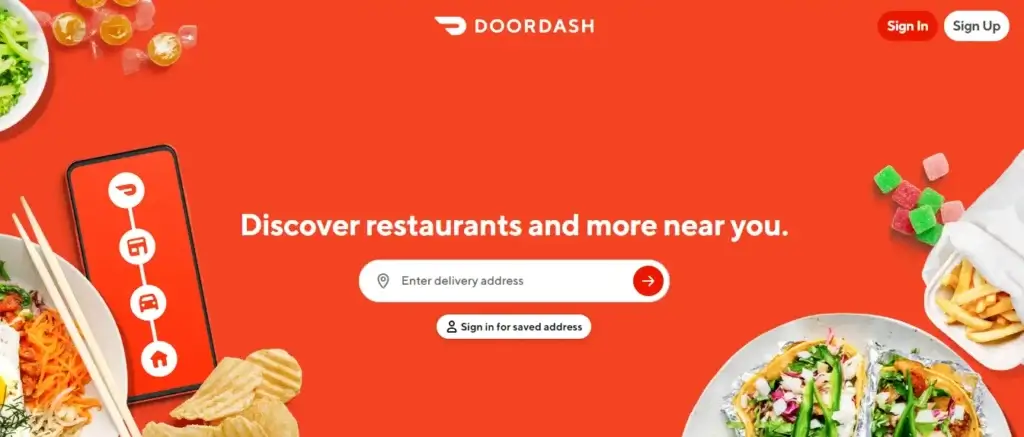
DoorDash is the best online food ordering and delivery platform in the United States. The company partners with several restaurants and allows you to reach a broader customer base. Its user-friendly interface and broad network allow customers to browse menus, place orders, and track their deliveries.
In 2015, DoorDash partnered with remarkable restaurant chains, like KFC and Taco Bell, to increase its restaurant network and improve its brand visibility.
DoorDash operates under an on-demand business model and provides various features to its customers. This includes users tracking the rider’s location, paying through different payment methods, giving exclusive deals to its users, providing subscription services, and more.
Pros
- Smooth operations
- Commission-free
- Easy customization
- Integrate with existing systems
- Affordable pricing
Cons
- High commission charged by delivery services
- Dependent on third-party delivery drivers
- Limited customization options
7. GloriaFood
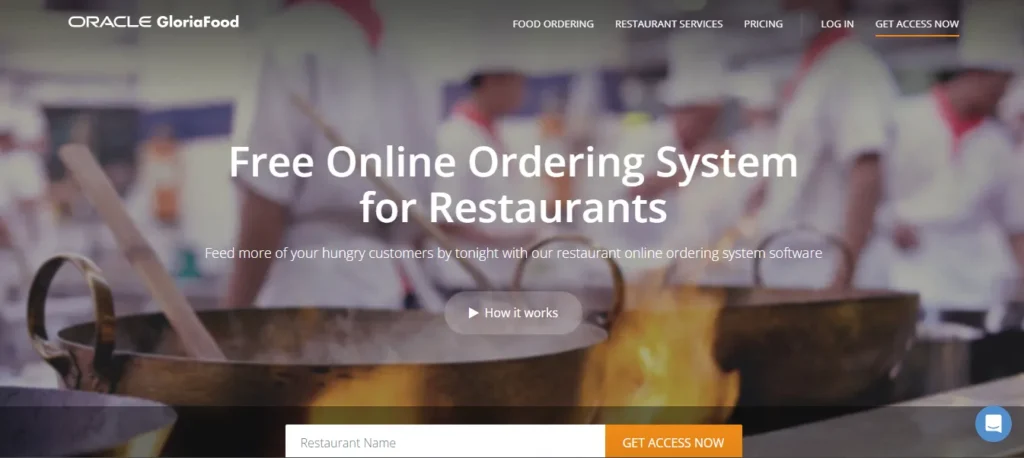
GloriaFood has gained popularity in the food delivery service. It is a cloud-based online restaurant food ordering system that provides a variety of online ordering options to customers.
This food ordering system online provides various features, which include:
- Order tracking
- Ordering statistics with heatmaps and client database exports
- Online payment processing
- Automated printing of kitchen tickets
- Multiple payment options
- User-friendly admin dashboard
Pros
- Quick setup
- User-friendly interface
- Promotions & coupons support
- Available for Android & iOS smartphones or tablets
- Customization
Cons
- Offer limited marketing and promotional opportunities
- Minor technical issues in the app
- Limited features and customization
8. MenuDrive
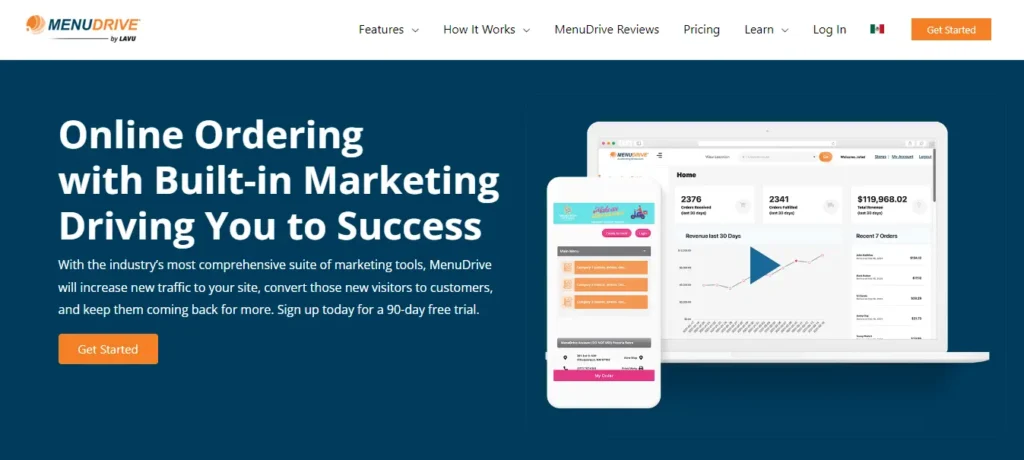
MenuDrive is a customizable online food delivery management system for restaurants. This platform allows restaurants to convert their menus into interactive websites, add feature food photos for more visual appeal, etc.
MenuDrive also provides retention features like promotions, loyalty, and coupons. Therefore, you can attract customers to revisit your store.
Pros
- 100+ customizable restaurant website templates
- Set up online payments in minutes
- Marketing tools
- Automation emails
Cons
- The tips management feature is not included.
- Multi-location is not added.
- The table management feature is missing.
9. UpServe
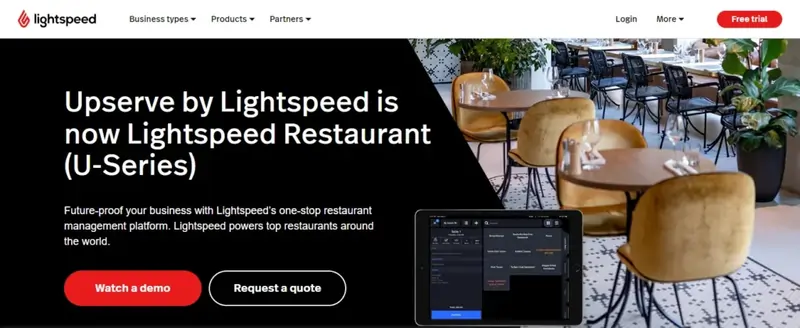
UpServe is another fast food automated ordering system built for all sizes and types of restaurants. This platform can be easily integrated with other third-party delivery platforms like Caviar, DoorDash, and Uber Eats to boost profitability.
UpServe offers a range of tools to help restaurant owners streamline operations, provide customers with an enjoyable dining experience, and drive better sales results.
Pros
- Easy to implement
- Multi-language support
- Budget-friendly
- POS functionality
- Easy menu editing
Cons
- Most expensive POS system
- Offline mode doesn’t function ideally
10. Flipdish

Flipdish is a famous online food ordering and delivery platform that helps restaurants create their food delivery app or website. With Flipdish, customers can order food online and pay for pickup or delivery from the restaurant.
Moreover, Flipdish helps to track and improve business performance with insights and reporting. This added convenience and helped restaurant owners to build long-term profitable customer relationships.
Pros
- Customer database management
- Retention campaigns
- Managed marketing
- Real-time analytics
- Customization branding
Cons
- Delayed software updates
- Errors not explained at checkout make it hard for customers to understand where they went wrong.
Comparison Between Food Ordering Systems for Restaurants
| Features | Enatega | Grubhub | UberEats | Postmates | Delivery | DoorDash | GloriaFood | MenuDrive | UpServe | Flipdish |
| Single-vendor support | Yes | No | No | No | No | No | Yes | Yes | Yes | Yes |
| Multi-vendor support | Yes | Yes | Yes | Yes | Yes | Yes | No | No | No | No |
| Role-based access | Yes | No | No | No | No | No | No | No | No | No |
| Multi-language support | Yes | No | No | No | No | No | Yes | No | Yes | Yes |
| Tipping option | Yes | Yes | Yes | Yes | No | Yes | No | No | No | No |
| Real-time order tracking | Yes | Yes | Yes | Yes | Yes | Yes | Yes | No | No | Yes |
| User-friendly interface | Yes | Yes | Yes | Yes | Yes | Yes | Yes | Yes | Yes | Yes |
| Marketing/promotional plan | No | No | No | No | No | No | No | No | No | Yes |
| Integrations with POS | Yes | Yes | Yes | Yes | Yes | Yes | No | Yes | Yes | Yes |
| Customization options | High | Medium | Medium | Medium | Medium | Medium | Medium | High | Medium | High |
| Pricing | Varies | Varies | Varies | Varies | Varies | Varies | Affordable | Affordable | Expensive | Affordable |
Why Do Restaurants Need Online Food Ordering Systems?
Nowadays, restaurant owners want to stay competitive by using technology. With the increased demand for food delivery services and convenience, restaurateurs prefer online food ordering systems.
If you’re on the fence about establishing an online food ordering system for your restaurant like a Foodpanda clone, consider these benefits:

Easy Online Order Management
A restaurant food ordering system helps to accept incoming orders easily without any mistakes. It simplifies the order-taking process and minimizes mistakes that can occur with traditional methods of taking orders. Plus, it also improves customer satisfaction and order accuracy.
Save Money
Online food ordering platforms can reduce labor costs and eliminate the need for third-party delivery services. This cost-saving can significantly impact your profit margins, and you can easily reinvest in other business areas.
Own Your Customer Data
With a food ordering system online, restaurateurs can easily maintain all their client’s information in a single place. This information can help them create marketing campaigns and promotions, assist in making smarter business decisions, offer deals and discounts to customers, and more.
Increase Revenue
Food ordering systems for restaurants can help increase revenue and make it easier for customers to order and pay quickly. With the best online ordering platforms, you can reach a large number of customers and drive revenue growth.
Order Tracking
Restaurants can easily track orders with an online food ordering system. With order tracking, restaurants can provide customers with a seamless dining experience and ensure that all orders are fulfilled on time. It helps restaurants to make informed inventory, monitor customer preferences, and make staffing decisions.
Easier Menu Management
With a food ordering platform, restaurants can manage their menu. They can easily add new items and modify the existing ones. Web-based food ordering systems make complex interactive menus easier. Restaurants can add photos, descriptions, ingredients, nutritional information, and special offers.
Advantages And Disadvantages of Online Food Ordering System
Online food ordering systems offer numerous advantages that greatly benefit your business but also have some disadvantages. Let’s discuss both so you know them before using them for your business.
| Advantages of Online Food Ordering System | |
| Advantages | Description |
| Efficiency | It is one of the main advantages of online food ordering systems for restaurants. It streamlines the ordering process and saves customers and restaurant staff time. |
| Provide Personalized Experience | Allow restaurants to provide a better experience by offering personalized recommendations, promotions, and more. |
| Stay Ahead of the Competition | Online food ordering platforms can help you stay ahead of the competition. With a user-friendly and efficient mobile ordering app, you can attract more customers and place your restaurant on the top. |
| 27/7 Available | With the food ordering system online, restaurants are available round the clock to allow customers to place orders at any time from anywhere. |
| Reduce Human Errors | The online ordering platform minimizes human errors and eliminates the need for manual entry. |
| Disadvantages of Online Food Ordering System | |
| Disadvantages | Description |
| Revenue Conflicts | Sometimes, a conflict occurs between restaurant owners and delivery providers regarding payments. |
| Security Concern | The customer sensitive information such as payment details raises cybersecurity concerns. Therefore, restaurants can invest in security measures to protect customer data. |
| Training of Staff | When new technology is used, you should train your staff. Therefore, the chances of errors are less. |
| Depend on Ratings and Reviews | Ratings and reviews of customers can influence online ordering platforms. These are subjective and do not reflect the correct quality of the food or service. |
What Are the Components of the Food Ordering System?
Below are some features that you look at in the food ordering system.
Order Management
The order management system (OMS) is the backbone of any food ordering system. It handles the receipt, processing, and fulfilment of orders. The OMS integrates with the restaurant’s kitchen display and point-of-sale (POS) systems, ensuring orders are efficiently managed from the moment they are placed until they are delivered to the customer.
Menu Management
Menu management allows restaurants to update their offerings in real time. This component enables the addition, removal, or modification of menu items, descriptions, and prices. It also supports the creation of special deals and promotions, making it easier to manage seasonal or time-limited menus.
Payment Gateway
This component facilitates secure financial transactions, accepting various forms of payment like credit/debit cards, digital wallets, and other payment methods. It ensures that all transactions are encrypted and processed securely to protect customer data.
Analytics and Reporting
The analytics and reporting tool provide valuable insights into the restaurant’s performance. This component generates reports on various metrics such as sales trends, popular menu items, and customer feedback. These insights help in making informed business decisions and strategies.
Customer Support System
The customer support system includes multiple channels such as live chat, email, and phone support. This component ensures that any customer inquiries or issues are addressed promptly.
Choose the Best Online Ordering System For Your Restaurant
When choosing the best online ordering system for restaurants, follow these tips and tricks.
- Look for features and functionality that meet your needs.
- Always look for the best restaurant online ordering system that provides marketing tools and analytics.
- Check food ordering management system allows you to integrate the chosen system with your existing POS system.
- Choose a restaurant food ordering system that has a user-friendly interface.
- The design of online food ordering software should be mobile-responsive.
- Select the best online ordering for restaurants with transparent pricing.
- Opt for ordering systems that provide the trial version.
You can also choose the Enatega Multi Vendor food ordering system for your restaurant that provides all the features every restaurant needs. You can also customize it according to your needs.
Frequently Asked Questions
- What is a restaurant ordering system?
A restaurant ordering system is a system that enables restaurants to receive online orders from customers. These systems simplify the ordering process, from menu management to payment.
- What is a fast food ordering system?
The fast food ordering system allows customers to order food online. They provide various features to restaurants, which include:
- Payment processing
- Customization options
- Menu management
- How does the ordering system work?
Below are some steps that show how the online food ordering system works.
- Customer access the ordering system through the app or web
- Create an account
- Browse menus
- Place an order
- Make the payment using online payment methods
- Order placement
- Restaurant receives the order and starts working on it
- Rider receive the order from the restaurant and deliver it to the customer
- Customer provide feedback and reviews
4. What is the function of the ordering system?
The function of an ordering system is to facilitate seamless and efficient transactions between customers and restaurants. By offering an intuitive interface, the system ensures users can easily browse menus, customize their orders, and make payments.
5. What are the four types of ordering systems?
The main four types of ordering systems are:
- Phone ordering system
- Manual ordering system
- Point-of-sale ordering system
- Online ordering system





